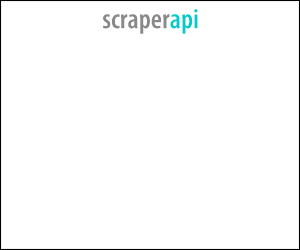摘要: To compete in the future, enterprises need fast answers and the ability to share uniform information to everyone. That's why IT leadership must garner support for data fabrics now.

▲圖片標題(來源: Dmytro Razinkov via Alamy Stock Photos)
A “fabric” is defined as “a cloth made by weaving, knitting, or felting fibers,” according to dictionary.com. Alternate definitions include the following: “framework; structure; the fabric of society; a building; edifice.”
“Fabric” is an amorphous term -- so much so, that IT leaders can experience as much difficulty trying to explain its importance to management as it did when another amorphous term -- cloud -- came on the scene over a decade ago.
However, to move forward with command over data and the ability to both secure data and recombine data for new insights, it is exactly a data fabric that IT must create and sell to management so the company makes the investments in tools and skills that will be needed to create and maintain a data fabric.
How can IT define and explain the importance of a data fabric in plain language that the business will understand and support?
Data Fabrics Address Pain Points
The answer begins by identifying organizational pain points that cost time and money and illustrating how a data fabric can address these pain points.
As an example, here is a pain point moment that was about to happen at an industrial equipment company last year, but was successfully averted because of the data fabric the company had in place.
The company’s star salesperson was about to pitch a multi-million dollar deal to a major client. Right before he made the call, he checked in on the client’s recent experience with the company. He noticed that several records had come in from customer service.
Apparently, the client had experienced significant production problems with the very equipment that the salesperson wanted to pitch. Before calling the client, the salesperson got in touch with service, learned more about the production issues, and then called the client to see how he could help.
Months later, the salesperson booked the multi-million dollar order with the client because all issues had been resolved, and the client trusted the salesperson to always “have its back.”
The Role that Data Fabrics Play
Without a data fabric that cross-connected all enterprise information, the salesperson likely would not have been aware of problems the client was having with equipment. He probably would have called the client and been met with anger when he pitched his deal.
What the data fabric did was give the salesperson end-to-end visibility of all of the data throughout the company on that particular client. The end-to-end information gave the salesperson visibility of the client’s recent product issues. This enabled the salesperson to proactively engage with the client in issue resolution.
What Data Fabrics Do
A data fabric is “a design concept that serves as an integrated layer (fabric) of data and connecting processes.”
By connecting all the data from all its sources and then housing this data in a uniform data repository that becomes a “single version of the truth” for everyone throughout the organization, a data fabric eradicates the many data silos that exist in company departments. This “silo breaking” enables the delivery of holistic and integrated information to any point within the enterprise. It also speeds time to results for analytics that are needed for business decisions.
The alternative to data fabrics is to live without them. This means accepting data silos and the conflicting visions of the business that these individualized silos give different departments throughout the enterprise. Most companies want all departments to work with the same information so business decisions can be made quickly and effectively. Data fabrics enable this. This is the argument that IT leadership needs to make to the business so investments can be made into data fabrics.
Fabric Building
The data fabric will consolidate data management into one environment, automatically managing disparate data sources, technologies, and security in both on-premises and cloud environments.
However, to build a data fabric, IT needs enterprise investment into tools and skills that will cross-connect data from a variety of different sources. Tools will include data extract-transform-load (ETL) software, and other data cleansing and reformatting tools that ensure that data from diverse sources can be connected and interoperate.
The skills that are needed for this work are in the areas of IT infrastructure, data management, networking and security. While some data fabric building tasks can be automated or performed by more junior people, senior data architects and infrastructure specialists will be needed to direct and orchestrate the work.
Because data fabrics are infrastructure, the challenge IT will have is showing non-IT management the value of committing substantial funds for tools and people that appear to deliver nothing of outward value to the business.
How Can IT Do This?
You must begin with a strong business case and show how a data fabric can eliminate corporate pain points with an end goal of describing the need for data fabrics so clearly that if a senior non-IT executive is stopped in the hall by a board member and asked to explain the importance of a data fabric, he or she would feel confident in doing so.
轉貼自: InformationWeek
若喜歡本文,請關注我們的臉書 Please Like our Facebook Page: Big Data In Finance


留下你的回應
以訪客張貼回應